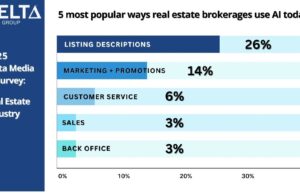AARP: Is Your Neighborhood Livable Today and In the Future? New Livability Index Helps People Assess, Plan For Needs and Wants
AARP Bulletin explores most livable neighborhoods and cities for date nights, staying healthy
SEATTLE – April 20, 2015 – (RealEstateRama) — The AARP Public Policy Institute today is launching the AARP Livability Index, a first of its kind resource that allows people to determine how well their communities are meeting their current and future needs. People, policy makers and the private sector can use the Livability Index to measure how their location – down to the neighborhood level – rates across a comprehensive range of metrics that reflect user friendliness, and customize their search based on their own priorities.
In an exclusive feature, the May issue of AARP Bulletin uses the Livability Index to identify the most livable places in the country to live for people 50-plus. The AARP Bulletin feature, which can be read at www.aarp.org/mostlivable2015, includes the ten “Most Livable Neighborhoods” in the country, including Mifflin West in Madison, Wisconsin, an eclectic community bordered by a university and state government with diverse housing and minimal traffic congestion within walking distance of parks, lakes, shopping, performing arts centers and the state capitol. New York City’s Upper West Side is another “Most Livable Neighborhood,” which despite its expensive housing offers a multi-generational and walkable community with great restaurants, world-class culture, cheap and convenient mass transit, as well as easy access to gyms and Central Park jogging paths. AARP Bulletin crunched the numbers to identify places where it’s great – not glitzy – to live.
“Whether you’re a city planner or a person who wants to improve your life, it’s important to know what you have, what you’ll need, and then plan accordingly,” said Dr. Debra Whitman, AARP Chief Public Policy Officer. “Every community has areas where it can improve and the Livability Index provides the tools and resources to help people meet their needs and wants.”
AARP defines a livable community as one that has affordable and appropriate housing, supportive community features and services, and adequate mobility options, which together facilitate personal independence and the engagement of residents in civic and social life. It’s a place where people can get to where they want to go, living comfortably and in good health, and being able to remain active and engaged. Importantly, the elements that make a community livable are useful for people of all ages, not just Americans 50-plus.
The AARP Livability Index, available at www.aarp.org/livabilityindex, was designed to provide the best basis for comparing localities across the nation by dozens of experts at the AARP Public Policy Institute and elsewhere. Aided by a national survey of 4,500 Americans 50-plus about the aspects of their communities most important to them, these experts selected 60 factors spread across seven categories: housing, neighborhood, transportation, environment, health, engagement and opportunity. For example, the “Transportation” category includes metrics on the frequency of local transit service, traffic congestion and crashes, and household transportation costs.
Users can also incorporate their own preferences by changing the weights of how different components are scored. Taken together, the AARP Livability Index, which uses more than 50 national sources of data, provides the clearest picture yet of how well a community meets the current and future needs of people of all ages.
In addition to the “Most Livable Neighborhoods” list, AARP Bulletin also reports the best cities – of all sizes – that meet a few key priorities of Americans 50-plus. For example, using the Livability Index’s culture, arts and entertainment factors, AARP Bulletin “Best Cities for Date Night,” which include Nashville, TN; Richmond, VA; and Brentwood, TN. AARP Bulletin also released lists that include “Best Cities for Making New Friends,” and “Best Cities for Staying Healthy.” Notably, San Francisco, CA; Buffalo, NY; and Hoboken, NJ were listed as easiest cities to get around. Best cities for making new friends included Washington, DC; Sioux Falls, SD; and Rapid City, SD. Finally, best cities for staying healthy included San Francisco, CA; Arlington, VA; and Novato, CA.
The arrival of the AARP Livability Index will be particularly important in the coming years to address the changing needs and wants of this country’s aging population. According to AARP research, nearly eight-in-ten Americans 50-plus want to stay in their current homes and communities as they age; U.S. Census figures show that the overwhelming majority of them choose to do so. The AARP Livability Index can be a powerful tool for local officials and others in adapting their cities so that residents of all ages can stay healthy and active.
“Having your doctor, a grocery store, or favorite restaurant a half-mile away doesn’t mean much if you can’t get there,” added Whitman. “We all have a role to play in developing the public, private and personal solutions needed to keep our communities as vibrant as the people who live there.”
For more information, please visit www.aarp.org.
###
About AARP
AARP is a nonprofit, nonpartisan organization, with a membership of nearly 38 million, that helps people turn their goals and dreams into real possibilities, strengthens communities and fights for the issues that matter most to families such as healthcare, employment and income security, retirement planning, affordable utilities and protection from financial abuse. We advocate for individuals in the marketplace by selecting products and services of high quality and value to carry the AARP name as well as help our members obtain discounts on a wide range of products, travel, and services. A trusted source for lifestyle tips, news and educational information, AARP produces AARP The Magazine, the world’s largest circulation magazine; AARP Bulletin; www.aarp.org; AARP TV & Radio; AARP Books; and AARP en Español, a Spanish-language website addressing the interests and needs of Hispanics. AARP does not endorse candidates for public office or make contributions to political campaigns or candidates. The AARP Foundation is an affiliated charity that provides security, protection, and empowerment to older persons in need with support from thousands of volunteers, donors, and sponsors. AARP has staffed offices in all 50 states, the District of Columbia, Puerto Rico, and the U.S. Virgin Islands. Learn more at www.aarp.org.?
About AARP Bulletin
Published in print ten times a year and daily online, AARP Bulletin is the go-to news source for AARP’s more than 37 million members. Covering public policy, healthcare, employment security, consumer protection and AARP state and national news, AARP Bulletin delivers the stories behind key issues that affect the 50+. As a consumer-oriented news publication, AARP Bulletin provides members with the most pertinent information, and has become a must-read among congressional lawmakers and national opinion leaders. Learn more at www.aarp.org/bulletin.
CONTACT:
Carla Clunis, 646-633-4971,
Paola Torres, 202-434-2555,















